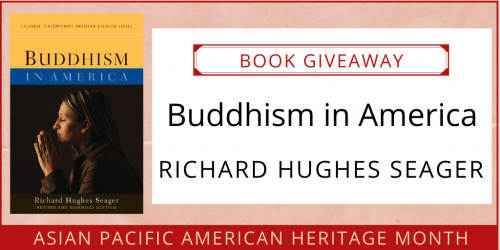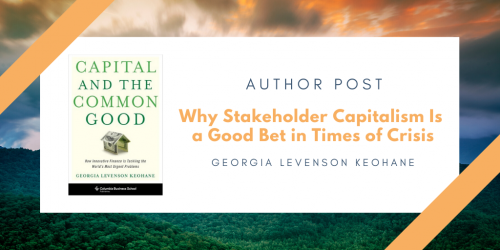COVID-19: War or Virus?
by Sunny Xiang

“Tonal Intelligence is smart and theoretically sophisticated. The book marks a significant contribution to work in Asian American and Asian studies, studies of twentieth-century literature and culture, theories of form and affect, and transpacific studies of late twentieth-century Asia.”
~Denise Cruz, author of Transpacific Femininities: The Making of the Modern Filipina
We are closing out Asian Pacific American Heritage Month with a look at the forthcoming book Tonal Intelligence: The Aesthetics of Asian Inscrutability During the Long Cold War by Sunny Xiang. In this post, Xiang examines the United States’ militaristic response to the COVID-19 pandemic.
• • • • • •
In late January 2020, I was preoccupied by two very different yet strangely synchronized worries: As I was scrambling to finalize my book manuscript on U.S. cold war interventions in Asia, my grandmothers, aunts, uncles, cousins, and nephews in Wuhan, the city where I was born, were retreating into their homes for the indefinite future due to a novel virus called COVID-19. By mid-March, when the outbreak reached my own door in New York City, it would seem astonishing that I’d once been able to view a transpacific virus as a personal yet remote matter and a transpacific war as a professional yet immediate one. For many in the United States, efforts to make sense of COVID-19 have mostly concerned its Asian origins (lab or bat? weapon or wet market?). Yet it strikes me that these efforts to diagnose a global epidemic have persistently relied on the logics of American militarism. Why has American public discourse been more inclined to understand COVID-19 as an outbreak of war rather than as an outbreak of disease?
“What distinguishes contemporary discussions of the epidemic COVID-19 is that the metaphorical appeals to war arise from material histories of war.”
In disparate contexts, from poverty to drugs, war has supplied the language of emergency. As scholars like Susan Sontag, Neel Ahuja, and W. J. T. Mitchell have shown, war metaphors have proven to be especially useful for talking about the global emergency of an epidemic. What distinguishes contemporary discussions of the epidemic COVID-19 is that the metaphorical appeals to war arise from material histories of war. Indeed, I would go so far as to say that American wars in Asia throughout the twentieth century have produced the racial optics, militaristic infrastructures, and jingoistic idioms that inform today’s conceptualizations of COVID-19 as an Asian virus in America.
The most obviously racist manifestation of this phenomenon is the framing of a “Chinese virus” as an “invisible enemy.” This coarticulation of disease and war has long underpinned American figurations of the “yellow peril,” a trope that scholars have typically attributed to the twinned threats of Japanese militarism and Chinese immigration at the turn of the twentieth century. A similar pestilential trope informs mid-twentieth-century American counterinsurgency campaigns in Southeast Asia, where guerrilla warfare came to be known as the “war of the flea.”
More subtly, the spread of COVID-19 has revealed the long-standing infrastructures of American militarism. For example, the highly publicized quarantine of the USS Theodore Roosevelt was only possible through the ongoing militarization of the U.S. territory of Guam. In fact, the Roosevelt’s very presence in the Pacific—where it was near the start of a seven-month tour and where it had just finished commemorating the twenty-fifth anniversary of U.S.-Vietnam diplomatic relations—testifies to the U.S. military’s enduring commitment to showing force in the name of protecting peace. This warship’s quarantine story thus reproduces the dichotomy between bellicose enemies (China and North Korea) and potential allies (Vietnam) while altogether denying the autonomy or even the presence of “unincorporated territories” (Guam).
“More subtly, the spread of COVID-19 has revealed the long-standing infrastructures of American militarism.”
American militarism has most pervasively structured COVID-19 discourse at the level of language. I’m thinking here of the rhapsodic invocations of drafts, mobilization, frontlines, and heroes by journalists and politicians alike. There have also been copious yet selective references to American engagements in “foreign wars” (Vietnam and Afghanistan but not the Philippines or Nicaragua), largely to compare the body counts between then and now (in both cases, of American citizens only).
If we are to take these military metaphors seriously, then it stands to reason that this is the first war that has been fought within the United States since the Civil War. Particularly in March and April, this new war rallied Americans toward buying guns and brandishing flags. Many called for activating the Defense Production Act from the Korean War and revitalized slogans and images from World War II. In chronicling the “arms race” for a vaccine, journalists repurposed the language of a cold war nuclear-arms race. California’s shelter-in-place mandates reanimated the imagery of nuclear fallout shelters, which, not unlike current depictions of quarantine life, foregrounded the survival tactics of the nuclear family. Future war fictions, meanwhile, became hallowed cultural references, from Dean Koontz’s 1981 novel The Eyes of Darkness, which imagines a Chinese-engineered virus called “Wuhan-400,” to the “Red Dawn” emails, which, in alluding to the 1984 film by the same name, conflates invasive pathogens with invasive communists. In this warlike environment, former presidential hopeful Andrew Yang called on his fellow Asian Americans to emulate the Japanese Americans of World War II, who had “volunteered for military duty at the highest possible levels to demonstrate that they were Americans.”
“If we are to take these military metaphors seriously, then it stands to reason that this is the first war that has been fought within the United States since the Civil War.”
The wielders of war metaphors have tended to be local, state, and federal officials. As hospitalization and death rates soared in New York, Governor Andrew Cuomo warned of “the enemy on the horizon” and described the virus as “march[ing] across our state.” On the Today Show, Cuomo declared, “In this war, ventilators are what the missiles were in World War II.” New York City Mayor Bill de Blasio was also predisposed to war metaphors, mostly for the purpose of throwing shade at Donald Trump. On March 18, de Blasio published an op-ed entitled “COVID-19 is a wartime scenario. President Trump needs to act like it is.” As for Trump himself, after initially dismissing the virus as a hoax, the commander in chief began eagerly capitalizing on the prestige of a “wartime presidency.” Despite his political differences with de Blasio, Trump’s war metaphors also served to deflect blame from himself. Trump’s usage of terms such as “Chinese virus” may seem explicitly xenophobic, but officials across the political spectrum have normalized the parlance of an “invisible enemy,” a term that has historically been used to describe communists and terrorists in their turn. Most significantly, all these politicians use military metaphors in ways that are more than simply metaphorical. For example, de Blasio’s metaphors are always coming out of the other side as literal, such as when he insinuates that Trump has been treating the virus as merely another virus and not as an actual war.
“To be clear, though, the victim of American war metaphors is not the Chinese government, which has countered with military conspiracy theories of its own. Rather, what this exchange shows is that metaphorical invocations of war constitute the language of imperial rivalry.”
The most pointed conflation of virus and war has been Trump’s increasingly aggressive allegations that COVID-19 is an act of bioterrorism by the Chinese military. To be clear, though, the victim of American war metaphors is not the Chinese government, which has countered with military conspiracy theories of its own. Rather, what this exchange shows is that metaphorical invocations of war constitute the language of imperial rivalry. This elaborate metaphorics has provided a way for both nations to simultaneously disclose and disavow their capacity to make war. To me, what’s ultimately concerning about this interimperial language of war is that it posits militarization as a solution rather than a problem. In the United States, the recourse to war exposes the government’s limited capacity to confront a global pandemic through testing, care, housing, social services, and financial relief. The severity of the COVID-19 outbreak certainly has something to do with the nature of the virus itself—but it’s also a reflection of the fact that Washington has long been redirecting funds for social and health infrastructures into the defense industry. In other words, if the United States has struggled to contain this pandemic, it’s because it spends more on military fortifications than any other country and charges more for healthcare than any other country.
The fact that U.S. government officials of all political stripes have responded to the COVID-19 crisis by vilifying enemies, closing off borders, and stepping up policing tells us something about the link between militarization and racialization. A rhetoric of war and defense, even when not openly racist or racial, implicitly serves to optimize the health outcomes of biosecure citizens by excluding and expending those who are already socially vulnerable. Such a rhetoric thereby harms not only East Asians, who have been subjected to xenophobic attacks, but also Black, Indigenous, and Latinx communities, who have been disproportionately affected by the systemic neglect of public health, in the form of actual biomedical care as well as services such as sanitation, sewage, and access to clean water. When U.S. public officials leverage the metaphor of war, therefore, what we should really ponder is why these officials have not been able to respond to a global health crisis as a global health crisis.





